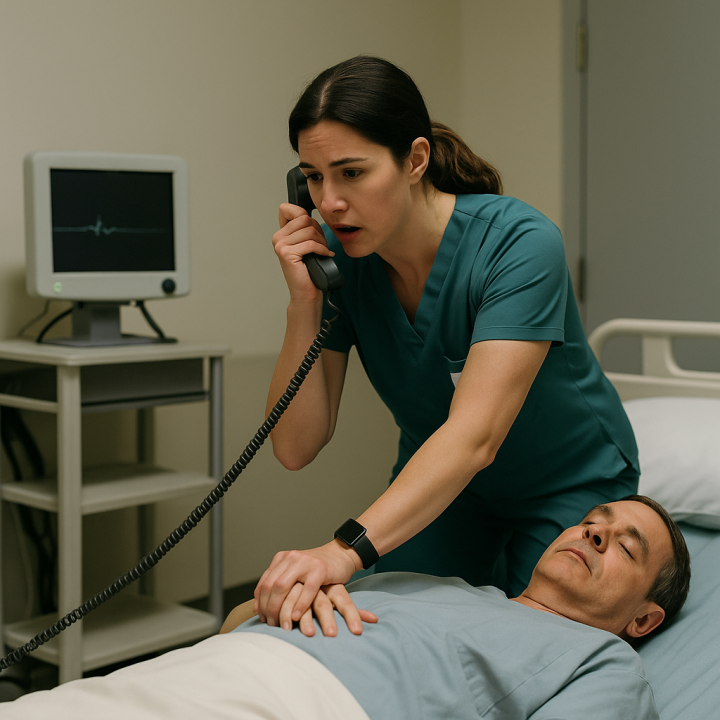Being the first responder to a Code Blue is one of the most high-stakes moments in healthcare. Whether you’re a nurse, doctor, or healthcare student, your response in the first few minutes can save a life.
Here’s a step-by-step guide to help you stay focused and act fast when seconds matter most.
1. 🧠 Stay Calm and Assess the Situation
Panic can paralyze even the most experienced professionals. Take a quick but focused assessment:
- Is the patient responsive?
- Are they breathing?
- Do they have a pulse?
This triage determines if Basic Life Support (BLS) or Advanced Cardiovascular Life Support (ACLS) is needed.
2. 📢 Activate the Code Blue
If unresponsive and not breathing normally:
- Call for help immediately or press the emergency button.
- Announce “Code Blue” loudly.
- Notify the Code Blue team according to your hospital’s protocol.
- Ask someone nearby to bring the crash cart and defibrillator.
3. 🫀 Begin High-Quality CPR Immediately
While help is on the way:
- Start chest compressions at a rate of 100–120 per minute and a depth of at least 2 inches (5 cm).
- Ensure full chest recoil.
- Minimize interruptions.
If you’re trained:
- Provide rescue breaths using a bag-mask device at a 30:2 ratio with compressions (or 1 breath every 6 seconds if advanced airway in place).
4. ⚡ Use the AED/Defibrillator Promptly
As soon as a defibrillator or AED is available:
- Turn it on and attach pads to the chest.
- Follow prompts or analyze rhythm if in manual mode.
- If the rhythm is shockable (VF/pulseless VT), deliver a shock ASAP.
- Immediately resume CPR after the shock.
5. 🧑⚕️ Prepare for Handoff to the Code Team
When the Code Blue team arrives:
- Provide a brief summary of:
- What you found
- What time CPR started
- What interventions you’ve done (shocks, airway, meds)
Step back unless directed to continue a specific role.
6. 🧾 Documentation & Debrief
After the event:
- Document the time, actions, and outcome clearly.
- Participate in a team debrief—a vital step for both clinical learning and emotional processing.
✅ Pro Tips
- Know where the crash cart and AED are on your floor.
- Practice your BLS and ACLS algorithms regularly.
- Never hesitate—early action saves lives.
💬 Final Thoughts
Being first on the scene of a Code Blue can be overwhelming—but preparation, practice, and confidence in the ACLS protocols can make you a true lifesaver. The first two minutes are critical. Trust your training, stay calm, and act fast.


